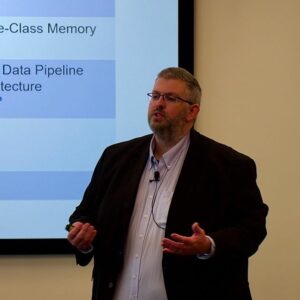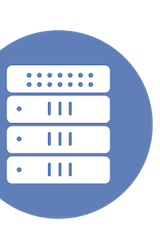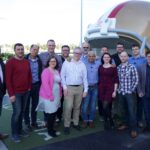|
|
 Jeff Baxter presents for NetApp |
This Presentation date is March 8, 2018 at 10:30-12:30.
Presenters: Jeff Baxter, Santosh Rao
Delegate Panel: Arjan Timmerman, Chan Ekanayake, Chin-Fah Heoh, Dan Frith, Dukagjin Maloku, Glenn Dekhayser, Josh De Jong, Lino Telera, Mariusz Kaczorek, Michael Stanclift, Rachel Traylor, Ray Lucchesi
NetApp Vision for NVMe and Storage-Class Memory with Jeff Baxter
Watch on YouTube
Watch on Vimeo
Jeff Baxter, Chief Evangelist for ONTAP at NetApp, outlined NetApp’s strategic vision for the integration of NVMe and storage-class memory into its products, emphasizing the company’s commitment to innovation in the storage industry. The approach was presented against the backdrop of broader industry changes, including the shift toward data-driven environments and the increasing importance of digital transformation in changing how businesses operate and create value. Baxter noted that leveraging NVMe and storage-class memory is crucial as these technologies become more ingrained in the industry’s future.
During the presentation, Baxter underscored the significance of flash memory in the digital transformation and its prevalence amongst high-performance workloads. He described how NetApp initially missed the inflection point of all-flash adoption but subsequently climbed to the second position in the market and aims to reach the top. The talk drew distinctions between NVMe and existing technologies, noting the dramatic improvements in performance and reduction in latency that NVMe offers, which align with the demands of emerging applications like artificial intelligence and real-time analytics. The session included a discussion on hybrid storage solutions, which allows layering of storage-class memory with solid-state drives for optimized performance and cost-effectiveness, and positioned NetApp to harness these technologies efficiently in enterprise environments.
Baxter also touched upon various media layers and the company’s forward-looking architectural strategies to manage these complex storage tiers seamlessly. He clarified that NetApp does not produce solid-state media but collaborates closely with major suppliers to ensure readiness for the enterprise market. NetApp seems to be preparing for a holistic adoption of these solutions within their data center architecture, envisioning the integration of NVMe and storage-class memory as standard across infrastructures, while simultaneously developing mechanisms to move and manage data effectively across different storage layers. Overall, the presentation conveyed a strong message of NetApp’s commitment to innovation and adaptation in the rapidly evolving storage industry, ensuring their solutions are both cutting-edge and aligned with customer needs.
Personnel: Jeff Baxter
NetApp Architecting and Edge to Core to Cloud Data Pipeline with Santosh Rao
Watch on YouTube
Watch on Vimeo
Santosh Rao, Senior Technical Director of Workloads and Ecosystem at NetApp, provides a comprehensive architectural overview of NetApp’s data pipeline strategy during Storage Field Day 15. The discussion begins with a recognition of the challenges faced by legacy data architectures, particularly their inefficiencies and limitations in handling modern analytics workloads. NetApp is actively extending its data pipeline capabilities to operate effectively from the edge to the core and up to the cloud. This transition aims to address the data dynamics in legacy systems by accommodating new-age applications like NoSQL databases and big data solutions, while also considering the implications of cloud-facing architectures, and the fluctuating cost implications of cloud storage.
Rao highlights the shifting landscape regarding enterprise installations, noting a departure from traditional architectures, such as those built around VMware, towards leaner systems utilizing Linux and KVM. This shift acknowledges the growing influence of cloud computing and the emergence of the edge as critical data sources. However, challenges remain, particularly the prohibitive costs and administrative burdens of maintaining multiple copies of data across different systems, which is often unsustainable as data volumes grow. NetApp identifies a significant opportunity to step in as an intermediary player that ensures data fluidity and resource efficiency, enabling enterprises to leverage cloud advantages without being locked into a single vendor or facing exorbitant data management costs.
In his presentation, Rao also discusses the evolving needs of data systems at the edge, showcasing innovations and partnerships pivotal for enhancing NetApp’s presence in this domain. For instance, NetApp’s engagement with vector data and solutions like ONTAP Select demonstrates the company’s strategy to empower edge computing while synchronizing it with core and cloud resources. This approach not only signifies NetApp’s strategic neutrality across different platform ecosystems but underscores its commitment to optimizing data handling across diverse operational landscapes. Through AI and machine learning capabilities, particularly in real-time analytics and low-latency applications, NetApp aims to deliver a robust architecture that supports modern data-driven requirements, thus resonating with both enterprise needs and industry trends.
Personnel: Santosh Rao
NetApp ONTAP Update: What’s New in ONTAP 9.3 with Jeff Baxter
Watch on YouTube
Watch on Vimeo
Jeff Baxter, Chief Evangelist for ONTAP, presented the latest updates in ONTAP version 9.3. The update is designed to optimize and simplify data management with features such as adaptive QoS, 40% faster performance on AFF HA pairs, improved efficiency, and stronger compliance tools. The updates reflect NetApp’s ongoing commitment to enhancing the software aspect of ONTAP, focusing on making it suitable for modern, scale-out infrastructures and providing predictable upgrade cycles for users.
During the presentation, Baxter highlighted NetApp’s strategy of a six-month cadence for software releases, ensuring regular updates, and keeping functionality predictable and reliable for both partners and customers. He detailed the significant software optimizations that have led to substantial performance improvements, exemplified by the 40% performance boost on certain workloads using the same hardware. Another focal point was the update to adaptive QoS, a feature that now allows for real-time adjustment of workload performance based on IOPS per terabyte, enabling consistent performance as workloads scale.
Moreover, Baxter emphasized the role of ONTAP in the data fabric architecture, crucial for linking multiple clouds and modernizing traditional data centers. ONTAP’s flexibility allows it to operate across a variety of environments, including in the cloud as a software-defined solution. Security enhancements in version 9.3, such as enhanced encryption and compliance tools, were also presented as key improvements, empowering users to better protect their data and comply with regulatory requirements. The updated ONTAP facilitates adaptive, simplified provisioning and greater storage efficiency by incorporating advanced deduplication processes.
Personnel: Jeff Baxter








